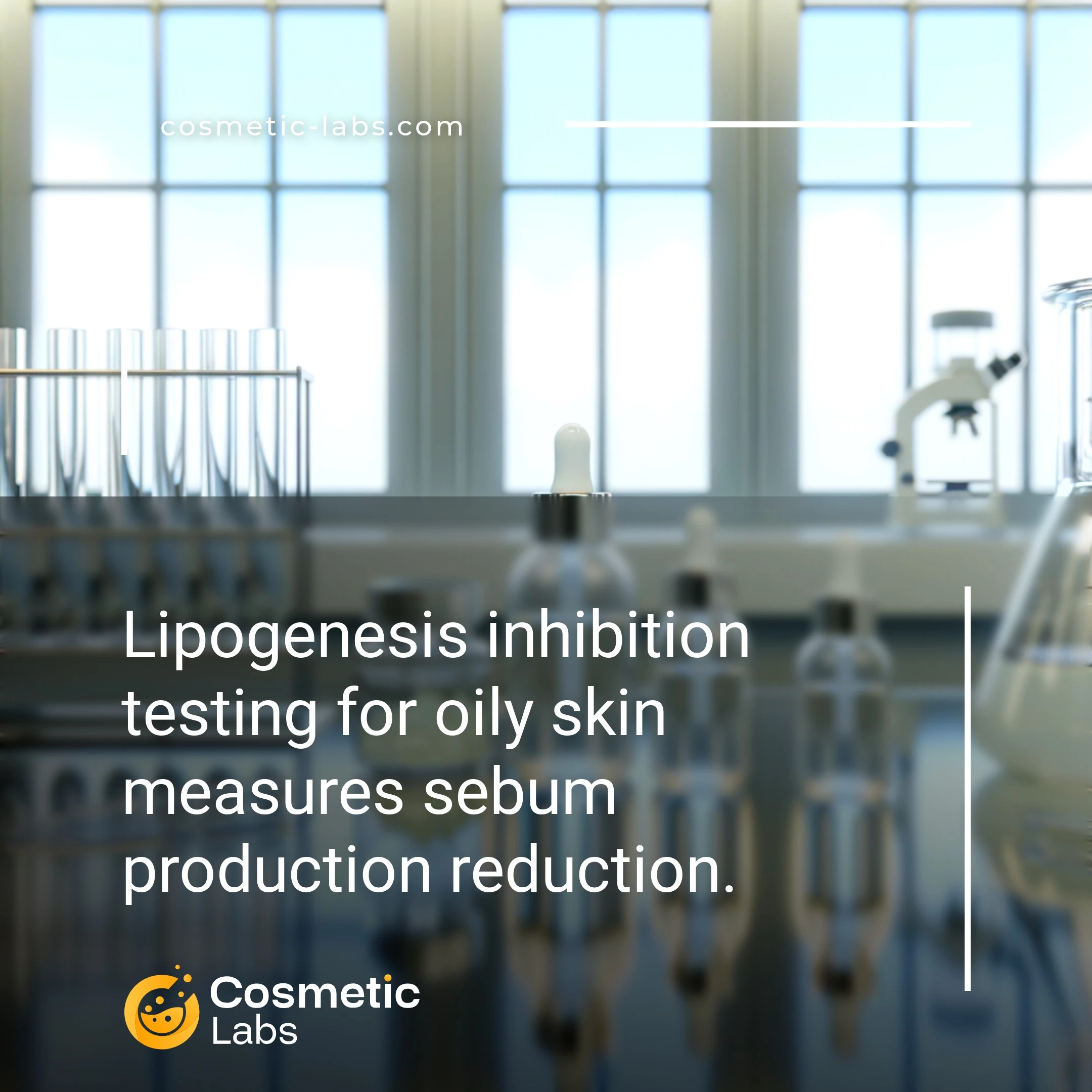Lipogenesis Inhibition Testing for Oily Skin Products

What is Lipogenesis inhibition?
Lipogenesis inhibition testing for oily skin measures how cosmetic ingredients block sebaceous gland oil production at the cellular level. Labs use sebocyte cultures and enzymatic assays to evaluate compounds that target acetyl-CoA carboxylase and fatty acid synthase pathways. This testing reveals which actives can reduce sebum output by 20-40% within 72 hours, helping brands develop targeted formulations for shine control and pore refinement products.
Why do you need this service?
Cosmetic labs on our platform use sebum production measurement protocols to validate anti-shine formulations and mattifying ingredients for oily skin products. Teams test botanical extracts, zinc compounds, and niacinamide blends through standardized assays that measure lipid synthesis reduction, delivering quantifiable efficacy data that supports regulatory submissions and marketing claims for oil-control serums, mattifying primers, and pore-minimizing treatments.
Who provides Lipogenesis inhibition services?
All cosmetic labs providing Lipogenesis inhibition services
There is no company providing these services at the moment.
Sebum Production Control Testing for Oily Skin Formulations
Specialized labs measure how effectively your formulations reduce excess oil production through lipogenesis inhibition testing, providing the clinical data needed to validate sebum-control claims for oily skin products.
In-Vitro Sebaceous Gland Activity Assessment
Labs use sebocyte cell cultures to test how your ingredients affect lipid synthesis pathways. These tests measure sebum production rates before and after ingredient exposure, typically showing results within 24-72 hours.
Testing protocols include:
- Sebocyte viability assays at multiple concentrations
- Lipid droplet quantification using fluorescent staining
- Gene expression analysis for key lipogenic enzymes
- Dose-response curves for optimal ingredient levels
Results help you determine effective concentrations and understand mechanism of action for regulatory submissions.
Clinical Sebum Measurement Studies
Human volunteer studies track actual sebum levels on treated skin using sebotapes and photometric analysis. Labs recruit participants with oily skin types and monitor oil production over 4-8 week periods.
Standard measurements include:
- Baseline sebum levels across T-zone areas
- Weekly sebum production monitoring
- Skin surface lipid composition analysis
- Pore size and visibility assessments
These studies generate the clinical proof points needed for marketing claims and product positioning. Connect with experienced labs on our platform to discuss your specific sebum-control testing requirements and timeline.
Practical Applications of Lipogenesis Inhibition Testing for Oily Skin Products
Beauty brands rely on lipogenesis inhibition testing services to validate sebum-control claims and optimize formulations for oily skin conditions.
Anti-Acne Product Development
Labs measure sebaceous gland activity using cell culture models to evaluate active ingredients like niacinamide, salicylic acid, and zinc compounds. Testing protocols track lipid production rates over 24-72 hour periods through biochemical assays and microscopic analysis. Quantitative data from these studies supports product claims about pore-minimizing effects and oil control duration.
Formulation teams use sebum reduction percentages to compare ingredient concentrations and delivery systems. Results guide decisions about optimal active levels and synergistic combinations for maximum efficacy.
Mattifying Cosmetic Validation
Cosmetic labs test primers, foundations, and setting powders using sebocyte cultures to measure oil absorption capacity and longevity. Testing measures sebum production inhibition at 4, 8, and 12-hour intervals to validate wear-time claims. Standardized protocols evaluate both immediate mattifying effects and sustained oil control performance.
Brands use this data to substantiate marketing claims about shine reduction and makeup longevity. Testing results inform product positioning and consumer education about expected performance windows.
| Testing Method | Measurement Focus | Typical Timeline | Key Metrics |
|---|---|---|---|
| Sebocyte Culture Assay | Lipid synthesis inhibition | 24-72 hours | % sebum reduction |
| Enzymatic Activity Testing | Acetyl-CoA carboxylase inhibition | 4-8 hours | Enzyme activity % |
| Gene Expression Analysis | Lipogenic pathway regulation | 48-96 hours | mRNA expression levels |
Ready to validate your oily skin formulations? Contact specialized cosmetic labs on our platform to discuss lipogenesis inhibition testing protocols tailored to your product development needs.
